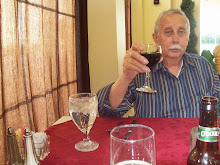Recently on Nova, there has been a series of programs to
explain some of the latest findings in cosmology and quantum mechanics. One of
the most unusual phenomena in quantum mechanics is called entanglement. Quantum
entanglement occurs when electrons, molecules, photons and other elementary particles
interact physically and then separated. They affect each other in the same way
no matter how much distance separates them. This has been described by some as
"spooky action at a distance" since nothing connects the pair and the
change is instantaneous.
In 1998, physicists at the California Institute of Technology (Caltech),
along with two European groups, successfully teleported a photon, a particle of energy that
carries light. The Caltech group was able to read the atomic structure of a
photon, send this information across 3.28 feet (about 1 meter) of coaxial cable
and create a replica
of the photon. As predicted, the original photon no longer existed once the
replica was made.The way that this would work on macroscopic scale -- in other words, the scale of things as we normally experience them as contrasted with the tiny world of particles and atoms – is that at one terminal of our teleporter would contain two booths. In one booth would be matter that is entangled with matter in a similar booth at the destination site. To teleport a person from the place of origin to the destination, the person would step into the second booth. The teleporter would then entangle the person's atoms and particles with the one in the other booth. This would destroy the person in the booth, but would cause an exact replica to be instantly created at the destination terminal.
This brings up a philosophical question. Is the person who appeared at the destination site really the same person that was sent from the place of origin? He or she would be identical in every way including thoughts. If not, I don't think anyone would want to travel this way. It may be okay for transporting goods, however.



No comments:
Post a Comment